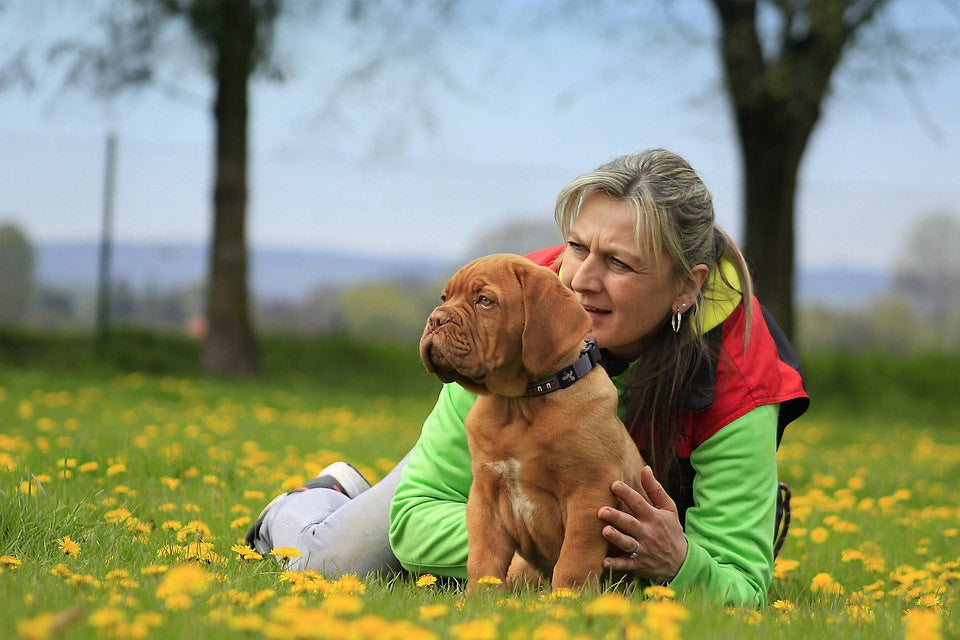How to Train Your Dog to Come
Teaching your dog to 'come' is one of the most basic and yet one of the most important obedience skills that you and your dog can share. Yes, share. If you go into it thinking you are controlling your dog, or 'making' him (or her) do something, the result will be far less effective than if you start thinking of you and your dog as a team. Your dog's success is as much as your success. The secret of how to train your dog to come is simple; patience, a little time, and lots of treats.
Understanding The Basics on How to Train Your Dog to Come
Although formal obedience training sessions are wonderful, they are short and infrequent. To have a good working companionship with your dog, you need to be aware of and involved in the day-to-day training.
Remember, dogs are information sponges and are always learning, whether you want them to or not. They aren't like a computer, performing when you turn them on and dormant when you turn them off. Dogs see, hear, smell and watch everything you do. You are their alpha dog, their leader. So, everything you do with them is reinforcing your relationship and his training.
The “come” command or as it's sometimes known as 'recall' is easy. It is one of the foundation skills in the triad of "sit, come and leave it". Additionally, many skills can be built on the foundation of “come”. It is a social skill that can make your dog welcomed wherever he goes, because, instead of appearing to others as a nuisance, he will instead be a valued addition to the experience of being with you.
Teaching a Puppy Versus an Older Dog to Come
First, you need to take into account what age your dog is. Is he a puppy? A slightly older dog, say 5 months or older, but no training? Is he a much older dog? This will affect his memory and the time span that you work with your dog. With a puppy, it is better to work in many short bursts of time, rather than a long session. Consider the length kindergarten versus high school classes. You don't want your dog or yourself for that matter, bored or overwhelmed.
Understand a puppy will be distracted more often than an older dog. But an older dog might have less patience learning a new skill. Certain breeds are more stubborn and other breeds more likely to please. This is where part of the teamwork comes in, you need to understand what level dog is and work to his strengths, not his weakness.
For example- A golden retriever may thrive on pleasing you, so make him aware that it pleases you when he does something you like, whereas another dog may appreciate the food reward more.
Remember, it will take time, repetition and kindness on your part to make your dog behave the way you want him to. Unfortunately, you can't wave a magic wand or even have one session. A formal session once a day, backed up by several informal ones, can make a difference. Most importantly, training needs to be constant with only short periods of time in between each session. It's not fair to your dog to have an hour long session and then wait two weeks before the next one.
A simple preparation. Make sure the treat you plan to give your dog is something he really loves. You want your dog to have the best experience possible.
Whatever the age and experience of the dog, begin with the minimum of distractions and the maximum amount of rewards.
Never, ever punish your dog for coming. If you call him because he's misbehaved then punish him, he will begin to think that come means he will get a swat or a punishment and will disobey. In fact, some dogs are known to run away when they are called to come because they do believe they will be punished. Wouldn't you?
Punishment from you or other can create an anxious dog.
How to Train Your Dog to Come - Assessing Your Expectations
If you want your dog to be as keenly trained as those amazing dogs who parade every year at the Westminster Kennel Club on TV, remember the trainers spend hours working with the dogs on specific tasks and patterns of behavior.
Take into account the time you might spend and the time you should spend. Most people who attend an obedience training class with their dog devote only 5 minutes a day to the exercises, if at all. This is definitely not enough time to properly teach your dog anything. It is better to span a few 5 to 15 minutes sessions throughout the day. If you are working, do some training with your dog before you go to work, when you come home for lunch, and then in the evening.
Timing is everything
A great way to start is right before meal time when the dog is hungry, this adds extra motivation. At the scheduled meal time, take a few kibbles and wave them in front of the dog's nose so he can smell them. Step back. And say "come" and when the dog comes, give him the kibble, verbally praise him "good dog”. Step back again, as he's eating, and say "come" and repeat the process, then set the food down for a meal. A small step like this is easy to incorporate and will give the dog something to look forward to learning.
Begin formal training by practicing indoors or in a fenced backyard, this eliminates distractions.
This can be done with the dog on or off a leash.
Again, like during meal time, have a treat in your hand, back up a few feet so you are looking at your dog, and open your arms in welcome and say “come” in a cheery voice
If she stops or wanders away from you, immediately stop the praise. When she starts coming toward you again, start in once more. Encourage the dog with warm tones in your voice, praise, treat, and rub. Then, allow him to go back to whatever he was doing.
Repeat several times
Once your dog has practiced a few times over several weeks, start offering treats occasionally a and only after the fastest responses.
As time progresses, you can take your dog to more advanced levels.
If your dog doesn't respond. Don’t reprimand or punish him for not responding. Call his name, ask him again to come, but this time, start jogging backward, clapping your hands to stimulate her to follow. Clapping your hands may also convince him that this is a fun game. Start praising the dog as soon as he moves toward you.
Teaching your dog to come isn't time intensive but it takes patience. Good luck!


